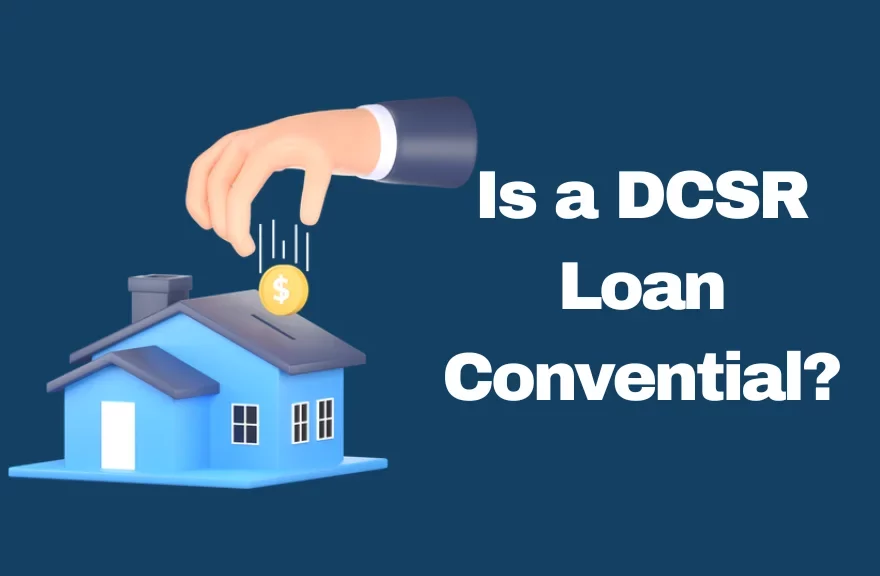Learn about is a DSCR loan Conventional and find out if they’re like regular loans. Discover how DSCR loans are different and if they’re right for you.
Which Is Better: DSCR or a Conventional Loan?
There isn’t a straightforward “better” option between a DSCR loan and a conventional loan as they serve different purposes:
DSCR Loan: Ideal for commercial real estate, emphasizing the property’s income-generating capacity. Suited for investors focused on cash flow and commercial property ventures.
Conventional Loan: Mainly for residential properties, suitable for individuals seeking to buy or refinance a home for personal use.
The choice depends on the borrower’s specific needs, property type, and investment goals.
Introduction to Is a DSCR loan Conventional
DSCR loans are not considered conventional in the world of commercial real estate financing. They are specialized instruments tailored to income-producing properties, featuring distinct underwriting criteria, risk assessments, and lending sources.
When financing commercial real estate ventures, there is no one-size-fits-all solution. Various loan options are available, each catering to specific needs and circumstances. One such option is the Debt Service Coverage Ratio (DSCR) loan, often questioned for its conventional status. In this article, we will explore the nature of DSCR loans and determine whether they can be considered conventional in the realm of commercial real estate financing.
Understanding DSCR Loans
Before diving into the conventional aspect, it’s essential to grasp the basics of a DSCR loan. The Debt Service Coverage Ratio loan is primarily utilized in commercial real estate transactions. It assesses a property’s ability to generate enough income to cover its debt obligations, including principal and interest payments.
DSCR is calculated by dividing the property’s (NOI) by its annual . The result is a ratio that reflects the property’s capacity to meet its financial obligations. Generally, lenders prefer a DSCR ratio of at least 1.25 or higher, indicating that the property generates 25% more income than required to cover its debts.
What are the drawbacks of a DSCR loan?
Here are some drawbacks of a DSCR loan,
● Strict qualification/documentations
● Higher interest rates
● higher down payments or insurance requirements.
● Longer approval procedures
● limited availability of own occupied property.
● Greater risks for Property Investors
● Possible prepayment penalties
Assessing the Maximum Number of Properties held by DSCR
No, unlike conventional loans, which are limited to ten properties at a time, DSCR loans have no maximum quantity. Although DSCR does not set any limits, loan arrangements may be altered by the lender’s policies and the borrower’s ability to maintain financial stability.
The borrower’s overall financial stability and ability to cover multiple debt obligations will influence the lender’s decision.
What is the maximum DSCR loan required?
Depending on the lender, borrowers seeking a Debt Service Coverage Ratio (DSCR) loan in Texas can potentially access amounts up to $2 million, with certain financial institutions willing to extend this limit to $3 million. DSCR loans, commonly associated with commercial properties, often have higher loan limits compared to residential loans. The lender evaluates the borrower’s ability to meet the Debt Service Coverage Ratio requirement, which assesses the property’s income against debt obligations.
The Non-Conventional Nature of DSCR Loans
Niche Focus:
DSCR loan Conventional are not your typical, run-of-the-mill mortgage. They are specialized instruments tailored to the unique needs of commercial real estate investors. Unlike conventional residential mortgages, which cater to a broader audience, DSCR loans are designed for a niche market.
Rigorous Underwriting:
Lenders offering DSCR loan Conventional employ a meticulous underwriting process that delves deep into the financials of both the property and the borrower. This level of scrutiny is not typically associated with conventional residential mortgages, which rely more on standardized credit and income assessments.
Risk Assessment:
Due to their focus on income-generating properties, DSCR loans often carry a higher degree of risk. Lenders need to evaluate not only the property’s income potential but also its market stability, occupancy rates, and other commercial-specific factors. In contrast, conventional mortgages usually involve lower risk assessments.
Varied Lending Sources:
While conventional residential mortgages are typically offered by banks and credit unions, DSCR loans can come from various sources, including banks, private lenders, and commercial mortgage brokers. This diversity in lending sources adds to their non-conventional nature.
Loan Terms and Structures:
DSCR loan Conventional often feature more flexible loan terms and structures compared to conventional mortgages. They may have adjustable rates, balloon payments, or interest-only periods that cater to the specific cash flow needs of commercial properties.
Commercial Property Types:
DSCR loan Conventional are predominantly used for income-producing properties such as multifamily apartments, hotels, office buildings, and retail spaces. Conventional mortgages, on the other hand, primarily focus on single-family homes and sometimes duplexes or fourplexes.
Use of Funds
Commercial property investors typically use DSCR loans for property acquisition, refinancing, or renovations, whereas conventional residential mortgages are mainly for purchasing a primary residence.
The Conventional Aspects of DSCR Loans
While DSCR loan Conventional have several characteristics that set them apart from conventional mortgages, there are aspects that align with conventional lending practices:
Principal and Interest Payments:
DSCR loan Conventional still involve principal and interest payments, similar to conventional mortgages. Borrowers are expected to pay down the loan over time, with interest accruing on the outstanding balance.
Property Valuation:
Just like with residential mortgages, DSCR loans require property valuation to determine the loan amount. Appraisals and property inspections are common steps in both processes.
Regulatory Oversight:
While DSCR loans have their unique underwriting criteria, they are subject to regulatory oversight, ensuring fairness and consumer protection. This aligns with the conventional lending industry’s compliance requirements.
Amortization Schedules:
DSCR loan Conventional can have amortization schedules, specifying how the loan will be paid off over its term. This is a conventional feature shared with residential mortgages.
Documentation:
Both DSCR loans and conventional mortgages require extensive documentation, including income verification, financial statements, and property-related paperwork.
Conclusion
DSCR loans are not considered conventional in the world of commercial real estate financing. They are specialized instruments tailored to income-producing properties, featuring distinct underwriting criteria, risk assessments, and lending sources. However, DSCR loan Conventional share some commonalities with conventional mortgages, such as the need for principal and interest payments, property valuation, regulatory oversight, amortization schedules, and extensive documentation.
FAQ’s
Q 1: How do DSCR loans differ from conventional residential mortgages?
Answer: DSCR loan Conventional are for commercial properties, while conventional mortgages are for homes. DSCR involves rigorous underwriting, and the risk is higher.
Q 2: Can I use a DSCR loan for residential investments?
Answer: DSCR loan Conventional are primarily for commercial properties, not residential. For homes, use conventional mortgages.

Introducing Emily Parker, a seasoned professional with over 5 years of expertise in DSCR loans. With her extensive knowledge and experience in the field, Varsha has consistently demonstrated a deep understanding of DSCR loan intricacies and a proven track record of delivering successful outcomes for her clients.

